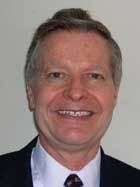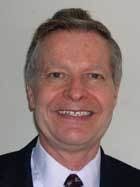by Allan Budris
I would like to introduce myself to WaterWorld readers. My name is Allan R. Budris, P.E., and I am the new author of the “Pump Tips & Techniques” column. I look forward to providing you with the tips and techniques that will improve the Life Cycle Costs of your pumps and pumping systems. More specifically, I plan to give you information that will improve your energy efficiency and maintenance costs, which will lead to extended life for your drinking water & wastewater pumps and pumping systems. I encourage questions on your pump problems, to help focus future columns.
I believe that I am well qualified to author this pump column. I have extensive experience in pumps and pumping system energy audits, troubleshooting and field upgrades. I have provided expert testimony in numerous litigation cases. I have also conducted many courses and seminars on pump reliability, life cycle cost improvements, hydraulics and suction performance. I have over 40 years of technical, executive and product development experience with several major pump companies, including Worthington, Goulds and A-C Pump. I have developed over 50 innovative and successful major new industrial pump products, including pumps for the water and wastewater markets. I have broad experience with most pump types, including centrifugal end suction, axial split case, multistage, submersible and vertical turbine pumps, plus rotary gear, and air operated diaphragm positive displacement pumps.
I have been active with the pump manufacturers association, the Hydraulic Institute, for over 25 years, chairing working groups on Pump Piping (a joint venture with ISO, International Standards Organization), and NPSH Margin. I am currently working with the Hydraulic Institute to develop a Pump Systems Guide book. I co-authored the “Pump User’s Handbook - Life Extension” (now in its 2nd edition), and have authored many other journal publications on pump reliability and pump suction performance. I have been awarded seven patents, including several on wastewater pumps, and am considered a world expert on pump suction performance and pump piping.
I have developed a unique theory that provides a first time industry capability to identify and provide reliability predictions for centrifugal pumps which are susceptible to damage from cavitation and suction recirculation. I have been able to get this new theory, called “Suction Energy,” accepted into the industry. This theory has greatly improved the reliability of many troublesome pump installations.
I received my B.S and M.S. degrees in Mechanical Engineering (Fluids Major) from the New Jersey Institute of Technology, and I am a registered Professional Engineer in the States of New Jersey and New York.
Some of my more recent, significant, consulting accomplishments have included an extensive pump and pumping system efficiency audit for Kodak, where I was able to identify over $2 million in annual energy savings, and troubleshooting on lift station pumps for the Parsippany Sewer Utility and large submersible pumps at the Orange County Water District.
During my career in the pump industry I have observed certain basic traits that distinguish the “best-of-class” from the “retroactive-fix” pump users, whose associated pump costs are normally much higher. These key traits are as follows:
- Best-of-class users do not purchase pumps based mainly on the lowest initial cost, but instead consider the total life cycle cost of the pump installation, which could by 20 times the initial pump cost.
- Best-of-class users evaluate the total pumping system, and not just the pump, in order to minimize energy usage. There is normally much more potential in the proper application of a pump and the system design, then just the pump efficiency alone.
- Best-of-class users are willing to make up-front investments in reliability, that include such things as the pump type, pump driver, installation, lubrication systems, pump speed, pump operating range, suction energy, and training.
- Best-of-class users do not just continue to repair or replace poor pump performers in kind, but instead have analyses performed to determine the root cause of the deficiencies, and institute a continuing corrective action program to upgrade the under-performing systems that have the most savings potential.
I will expand on these basic traits, plus other pump tips and their potential cost savings/benefits, in future columns.
About the Author:
Allan R. Budris, P.E., is an independent consulting engineer who specializes in training, failure analysis, troubleshooting, reliability, efficiency audits and litigation support on pumps and pumping systems. With offices in Washington, NJ, he can be contacted via e-mail at [email protected].




